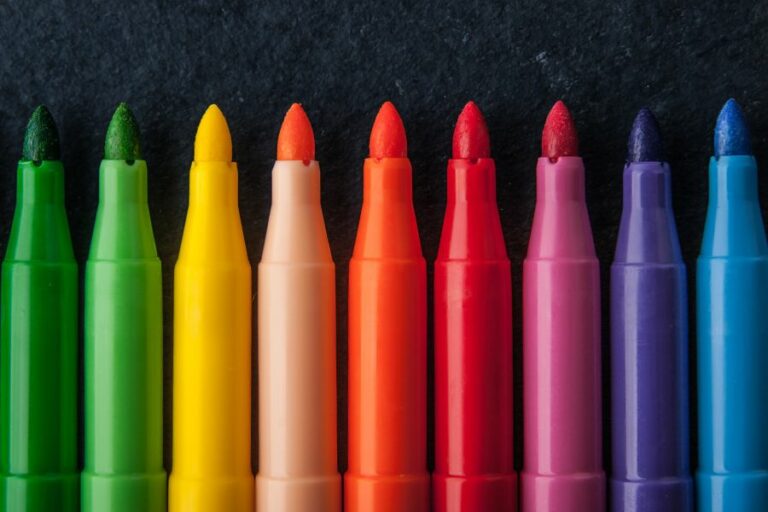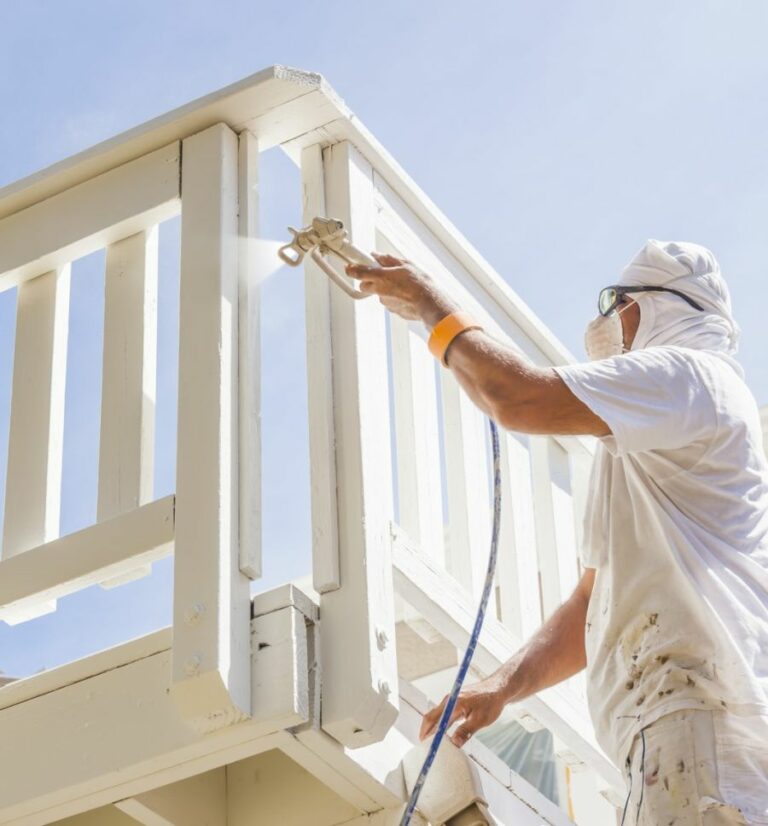Will Outdoor Paint Dry In Cold Weather. What pros say
Are you looking to give your exterior surfaces a fresh coat of paint but worried about cold weather hindering their drying process? Then, look no further! Our blog post, ‘Will Outdoor Paint Dry in Cold Weather,’ delves into the nitty-gritty of painting in colder temperatures, debunking common myths and providing essential tips and tricks to ensure a flawless finish.
Don’t let frigid temperatures hold you back from achieving that perfect result, and discover how you can complete your painting project, irrespective of weather conditions.
Will outdoor paint dry in cold weather:
Outdoor paint can dry effectively in cold weather, but factors such as temperature, humidity, and type of paint can affect drying time. For optimal results, paint between 50F (10C) and 90F (32C) with humidity below 70% in bright, indirect sunlight. Extended drying times, proper ventilation, and cold-weather paint formulations can ensure a high-quality finish in cold and humid conditions. Monitoring weather conditions and planning around milder periods is crucial for a successful project.

Discover essential factors affecting drying and how colder temperatures impact outdoor paint. Learn helpful tips and tricks for tackling your next painting project in chilly conditions, ensuring a flawless, long-lasting finish. Read on for expert advice and insider secrets.
Contents
- 1 Will Exterior Paint Dry Effectively in Cold Weather Conditions?
- 2 What Are the Consequences of Painting Outdoors in Excessively Cold Temperatures?
- 3 At What Temperature Does the Exterior Temperature Become Too Cold for Paint to Dry Properly?
- 4 What is the duration required for exterior paint to dry in cold weather conditions?
- 5 Is it Possible to Conduct Exterior Painting in 40 Degree Weather Conditions?
- 6 Is outdoor paint able to cure properly in cold weather conditions?
Will Exterior Paint Dry Effectively in Cold Weather Conditions?
Painting the exterior of your house or other outdoor surfaces is a task that many homeowners and DIY enthusiasts face. One of the most common questions is whether outdoor paint will dry properly in cold weather.
This article will explore the factors determining paint drying in cold conditions, provide some tips for successful cold-weather painting, and discuss the ideal conditions for outdoor painting projects.
• Factors Affecting Paint Drying Time in Cold Weather
– Temperature
Cold weather has a noticeable effect on the drying time of paint, with lower temperatures causing the paint to dry more slowly. Most manufacturers recommend applying paint when temperatures are between 50F (10C) and 90F (32C).
This range ensures optimal drying conditions for the paint. When the temperature falls below 50F, it’s generally not advisable to paint outdoors, as the paint may not adhere properly or form a durable finish.
– Humidity
High humidity levels can also significantly impact the drying time of paint, even in colder temperatures. As the air becomes more saturated with moisture, it can take longer for the paint to dry. Some paints are formulated to be more resistant to humidity, but a general rule of thumb is to avoid painting if the humidity level is above 70%.
– Type of Paint
The type of paint being used can also affect its drying time in cold weather. Oil-based paints tend to dry more slowly than water-based ones, meaning you may experience longer drying times when using oil-based products in cold conditions.
However, many water-based paints are now on the market designed to be used in colder temperatures.
• Tips for Successful Cold-Weather Painting
– Choose the Right Paint
If you must paint outdoors when the temperature is below 50F or in high humidity, choosing a paint designed to work in these conditions is essential. Many paint manufacturers produce special cold-weather formulations that adhere and dry properly in low temperatures.
Look for paint that states it can be applied at temperatures down to 35F (2C) or even lower for particularly cold climates.
– Be Mindful of Time
Since paint can take longer to dry in cold conditions, you may need more time for your project. This means planning your project around periods of milder weather and allowing for extended drying times, especially if the paint requires multiple coats.
– Monitor Weather Conditions
Keeping an eye on the weather forecast is crucial when planning to paint outdoors in cold conditions. Be prepared to adjust your schedule if the weather takes a turn for the worse, whether that means holding off on painting altogether or putting your project on hold until conditions improve. It’s better to wait for the right conditions than to rush ahead and end up with a subpar paint job.
– Ensure Proper Ventilation
If you are painting a structure, such as a shed or a garage, it’s essential to provide adequate ventilation to encourage the paint to dry. Opening windows and doors, and using fans to circulate the air, can help speed up the drying process.
• Ideal Conditions for Outdoor Painting
While painting outdoors in cold weather is possible, the best results are typically achieved under more favorable conditions. Here are some recommendations for ideal outdoor painting conditions:
- Temperature: The optimal temperature range for outdoor painting is between 50F (10C) and 90F (32C). This range provides the best balance between drying time and paint performance. If possible, aim to paint during this range for the best results.
- Humidity: Low to moderate humidity levels provide the best conditions for outdoor painting. Aim for a humidity below 70% to ensure the paint dries quickly and adequately.
- Sunlight: Painting during bright, indirect sunlight can help ensure the paint dries evenly, with minimal risk of sagging or dripping. Direct sunlight can cause the surface temperature to rise, leading to paint faster drying, which may not allow proper leveling and adhesion. Therefore, stick with indirect sunlight for optimal results.
- Wind: While a gentle breeze can aid in drying your paint, windy conditions should generally be avoided, as they can cause debris and dust to become trapped in the wet paint.
In conclusion, while outdoor paint can dry in cold conditions, it is best to paint under more favorable conditions whenever possible. Be prepared to allow for extended drying times, monitor weather conditions closely, and choose the right paint for cold-weather applications if you must paint outdoors in low temperatures.
If you follow these guidelines, you can achieve a high-quality paint finish even in difficult conditions.
What Are the Consequences of Painting Outdoors in Excessively Cold Temperatures?
Painting the exterior of a building is a task that requires meticulous planning and execution to achieve the desired results. One of the key factors to consider is the temperature of the environment.
When painting outside, weather conditions play an essential role in determining the quality and longevity of the paint job. Painting in ideal conditions, typically between 50-85 degrees Fahrenheit, ensures proper adhesion and drying of the paint.
However, painting outside when it’s too cold can have numerous undesirable consequences that can compromise the paint job. In this article, we will explore the potential issues when painting outside in cold temperatures and some tips to avoid these pitfalls.
• Paint’s Reaction to Cold Temperatures
It is important to understand how the paint reacts to cold temperatures to grasp the potential problems of painting in cold weather. Cold temperatures can slow down the curing process of paint, affecting its overall performance, durability, and visual appearance.
Low temperatures can especially affect latex and water-based paints, while some solvent-based paints might be more cold-resistant.
– Poor Adhesion
Cold temperatures can cause paint to thicken or become more viscous, posing a challenge when evenly spreading or applying the paint. Thick paint usually doesn’t adhere well to surfaces, resulting in peeling or flaking once it eventually dries.
Poor adhesion compromises the bond between the paint and the surface, leading to potential damage and requiring more frequent maintenance or repainting.
– Inadequate Film Formation
As temperature affects drying, painting in cold weather can lead to improper film formation. Paint typically dries by the evaporation of water or solvent, leaving behind a solid film that protects and adds color to the surface.
When the temperature is too cold, evaporation slows down, leading to the paint not correctly forming the desired protective film. This can leave the surface vulnerable to weathering and damage.
– Uneven Finish and Color
Painting outside in cold temperatures may cause the paint to dry unevenly, leading to an unattractive and inconsistent finish. This occurs as certain areas of the paint dry faster than others, causing variations in color and texture.
An uneven finish can be aesthetically displeasing and may require additional coats or touch-ups to correct.
– Increased Drying Time
As mentioned earlier, cold temperatures slow down the drying process. This is problematic for proper adhesion and film formation and can lead to practical challenges, such as increased drying times.
Painting outside in cold weather may take significantly longer to dry to the touch or between coats, prolonging the overall painting project.
• Tips for Painting in Cold Weather
While it is best to avoid painting outside in cold weather, there are instances when this is unavoidable. Here are some tips and practices to help ensure the best possible outcome when painting in colder conditions.
– Use Cold Weather Paint
Some paint manufacturers produce cold-weather paints that perform more effectively at lower temperatures. These paints have modified formulations that allow for better adhesion and film formation, even in less-than-ideal conditions.
It’s crucial to read and follow the manufacturer’s recommendations for temperature ranges and application guidelines for these types of paints.
– Warm Surfaces
Applying paint to warmer surfaces can help mitigate some of the problems associated with cold temperatures. On a sunny day, try painting surfaces exposed to direct sunlight first, followed by those in the shade.
Additionally, using heaters or heat guns to gently warm surfaces before painting can help improve adhesion and drying times.
– Monitor Weather Conditions
Keep a close eye on the weather forecast when planning an exterior painting project. If the temperature is predicted to drop below the recommended range for the paint, it’s best to postpone the project until conditions improve.
In some cases, waiting for a few hours or days for the temperature to rise can significantly affect the quality and success of a paint job.
– Apply Thin Coats
Applying thinner coats of paint in cold weather can help reduce drying time and ensure more even coverage. However, it’s essential not to sacrifice overall coverage and protection by applying too thin coats. Instead, aim to apply multiple thinner coats to achieve the desired finish and protection.
• Conclusion
Painting outside when it’s too cold poses substantial risks to a paint job’s durability, appearance, and overall success. Clear communication of the importance of temperature in exterior painting is crucial. By understanding these risks and following the tips outlined above, minimizing potential issues and achieving the best possible outcome when painting in cold weather is possible.
However, the most effective strategy is to plan your exterior painting project within the recommended temperature range, ensuring optimal results and lasting protection for your investment.
Consequence | Description |
|---|---|
Longer drying time | Paint may not adhere well to the surface in cold weather, leading to later peeling and other issues. |
Uneven paint surface | Paint may not dry uniformly, resulting in an uneven and unattractive appearance. |
Thickening of paint | Paint may thicken in cold temperatures, making it more difficult to apply evenly. |
Poor adhesion | Paint may not adhere well to the surface in cold weather, leading to peeling and other issues later on. |
Cracking and flaking | Paint applied in cold temperatures may be more prone to cracking and flaking over time. |
At What Temperature Does the Exterior Temperature Become Too Cold for Paint to Dry Properly?
• Introduction to Paint Drying
One essential element to consider when painting the exterior of a building is the weather. The painting should ideally be done when the weather is dry and not too cold or hot. Temperature can significantly affect the quality of your paint job, affecting how well the paint dries and adheres to the surface.
Understanding the appropriate temperatures for painting outdoors is crucial to avoid issues like uneven paint, peeling, and bubbling.
• Optimal and Minimum Temperature
– Optimal Temperature
The optimal temperature for exterior painting is between 50F (10C) and 85F (29C). Within this range, humidity levels should be between 40% and 70% for the best overall results.
– Minimum Temperature
Generally, the minimum temperature for painting outdoors with water-based paint (latex) is 50F (10C). The minimum temperature for oil-based paint (alkyd) is around 45F (7C). It’s essential to carefully read the paint’s label, as some products are designed to work at lower or higher temperatures.
A paint that can cure at lower temperatures is known as low-temperature paint.
• Importance of Surface Temperature
When painting outside, the temperature of the surface plays a significant role in the drying process. It’s not just the air temperature that matters, but also how cold or hot the surface you’re painting is.
A surface can be considerably colder or hotter than the air depending on various factors, such as exposure to sunlight, wind, and shade. Use an infrared thermometer to measure the surface temperature accurately.
Pro tip: Don’t paint in direct sunlight, as it may cause the paint to dry too quickly, leading to uneven drying and lap marks.
• Effects of Cold Temperature on Paint Drying
Painting in cold weather can lead to several issues that may negatively affect the quality and longevity of your paint job. Some of these problems include:
– Slower Drying Time
In low temperatures, water-based paint (latex) takes longer to dry, as the water in the paint may not evaporate as quickly. This slow drying can result in drips and uneven application, leading to a lower-quality finish.
– Poor Adhesion
Paint may not adhere to the surface in cold temperatures, leading to peeling or chipping over time. This issue is more prevalent with water-based (latex) paints, as cold temperatures can cause the polymer particles in the paint to clump together and not coalesce properly.
– Hindered Curing
Low temperatures can also hamper the curing process of the paint, especially for oil-based paints. Curing is the process where the solvents within the paint evaporate, leaving a durable, fully bonded film that resists weather and dirt. In cold temperatures, the solvents may not evaporate as they should, resulting in a weaker paint film.
• How to Paint in Cold Weather
If you cannot avoid painting in colder weather, consider taking the following precautions to ensure you achieve the best possible results:
– Utilize Low-Temperature Paints
Use paint products that are specifically formulated for use in low temperatures. These paints contain additives that facilitate drying and curing, even in colder weather.
– Monitor Weather Forecasts
Choose the timing of your painting project wisely. Pay attention to weather forecasts to avoid painting right before nighttime temperature drops or during an extended period of cold temperatures.
– Use Proper Painting Techniques
Apply the paint using the recommended techniques and at the appropriate thickness. Applying paint too thickly in cold weather can lead to poor drying and curing.
– Provide Additional Ventilation
When painting outdoors, ensure the area you’re painting is well-ventilated to facilitate moisture evaporation from the paint.
• Conclusion
When painting the exterior of a building, it’s essential to consider the weather, especially temperature. For optimal results, paint when temperatures are between 50F (10C) and 85F (29C) and humidity levels are between 40% and 70%.
Taking precautions like using low-temperature paints and monitoring weather forecasts can help ensure a successful, long-lasting paint job even in colder weather.
What is the duration required for exterior paint to dry in cold weather conditions?
Exterior painting is an important task to maintain the aesthetics and longevity of any structure. However, considering the temperature and weather conditions during the painting process is crucial for the project’s success. Cold weather can significantly affect the drying time of exterior paint, potentially leading to many problems, including chipping, bubbling, and peeling.
This article will discuss the ideal temperature for exterior painting, the factors that affect drying time in cold weather, and some essential tips to ensure a successful painting project.
• Ideal Temperature for Exterior Painting
The optimal temperature for exterior painting is between 50F and 80F (10C and 27C). Painting within this range ensures that the paint binds and cures properly, resulting in a durable and long-lasting finish. Generally speaking, paint manufacturers recommend that the temperature is above 50F for a minimum of two hours after the application to provide sufficient time for the paint to adhere properly to the surface.
• Factors Affecting Drying Time in Cold Weather
– 1. Temperature
As the temperature decreases, the drying time for paint increases. As the temperature drops, the paint takes longer to evaporate the water or solvents within it. In temperatures below 50F, the paint could take over twice the time to dry compared to warmer conditions.
– 2. Humidity
Cold weather often comes with increased humidity, further slowing drying time. Higher humidity means more moisture in the air inhibits the paint from fully evaporating, making it take longer to dry and cure.
– 3. Sunlight
Direct sunlight helps speed the drying process by warming the surface and evaporating moisture from the paint. There might be limited sunshine in cold weather, leading to an extended drying time.
– 4. Wind
A gentle breeze can help remove excess moisture from the painted surface, but strong wind gusts can have the opposite effect by blowing debris onto the wet paint, leading to a flawed finish.
• How to Mitigate the Effects of Cold Weather on Paint Drying Time
– 1. Use Cold Weather Paint
Cold weather paints are specially formulated to resist the adverse effects of low temperatures. This type of paint generally contains additives to help it dry faster and enhance adhesion and flexibility in cold conditions. It is recommended to use cold weather paint for temperatures as low as 35F (2C). Make sure to read the manufacturer’s instructions carefully to ensure proper application.
– 2. Select the Right Time of Day
When painting in cold weather, aim to start your project at the warmest time, typically around midday. This allows the sun to help heat the surface, facilitating faster paint drying.
– 3. Monitor the Weather Forecast
Before planning an exterior painting project in cold weather, monitor the weather forecast closely. Ensure there are no signs of rain, snow, or freezing temperatures for at least 48 hours post-painting. Remember, the paint will not adhere properly if the surface is wet or has frost.
– 4. Apply Thin Coats
When painting in cold weather, applying thin coats of paint is advisable. Thin coats dry faster and more evenly, reducing the chances of complications such as bubbling or peeling.
• Conclusion
Exterior painting in cold weather can be challenging but can be accomplished with the right precautions and due diligence. By choosing the appropriate paint, waiting for optimal weather conditions, and following the necessary steps to ensure proper drying, you will be well on your way to a durable, long-lasting finish.
Remember, it’s always better to be patient and wait for appropriate temperatures to ensure a successful exterior painting project. The result will be a professional-looking paint job that lasts for years, saving time, money, and hassle in the long run.
Temperature Range | Estimated Drying Time |
|---|---|
50-60F (10-15C) | 2-4 hours (touch dry), 6-8 hours (re-coatable) |
40-50F (5-10C) | 6-8 hours (touch dry), 12-16 hours (re-coatable) |
35-40F (1-5C) | 8-12 hours (touch dry), 16-24 hours (re-coatable) |
32-35F (0-1C) | Not recommended, drying times will vary significantly |
Is it Possible to Conduct Exterior Painting in 40 Degree Weather Conditions?
When it comes to painting outdoors, choosing the right time and weather conditions is crucial for the success and durability of your paint job. Some may wonder whether it is possible to paint outside in 40-degree (Fahrenheit) weather. This article will discuss that topic in detail, providing recommendations, tips, and best practices to ensure your paint job is as successful as possible in low temperatures.
• Understanding the Effects of Cold Weather on Paint
To provide a clear answer to the central question, it is important first to understand how cold weather can affect paint and the painting process. It is worth noting that the type of paint used, the surface being painted, and the specific conditions in which the paint is applied will all have an impact on how well the paint will perform at low temperatures:
– Paint Drying Time
Lower temperatures can significantly increase the time it takes for paint to dry. Most water-based (latex) and oil-based paints require temperatures above 50 degrees Fahrenheit to cure properly. The drying process may slow or fail when temperatures drop below this threshold.
– Paint Adhesion
The ability of the paint to adhere to the surface is also affected by low temperatures. Cold weather can create various issues related to adhesion, including incomplete bonding between the paint and the substrate, resulting in peeling or flaking later on.
– Paint Viscosity
Cold temperatures can affect the viscosity of the paint, making it thicker and more difficult to apply. This can result in uneven coverage and an increased likelihood of brush or roller marks appearing on the painted surface.
• Tips for Painting in 40-degree Weather
While painting in weather around 40 degrees Fahrenheit may not be ideal, achieving a successful paint job is possible by taking certain precautions and using the proper materials. Here are some tips to help ensure your project goes smoothly when painting in colder conditions:
– Choose the Right Paint
Select a paint specifically formulated for cold weather application. These paints are designed to perform optimally in low temperatures, offering better adhesion, faster drying times, and improved workability compared to standard paints. Look for products labeled as “low-temperature” or “cold weather” paints and read the manufacturer’s guidelines for use.
– Monitor Weather Conditions
Keep an eye on the weather forecast and choose a day with a stable, dry forecast that is expected to have temperatures consistently above 40 degrees Fahrenheit for several hours before and after painting. Ideally, the temperatures should rise as the day goes on to allow the paint to dry properly.
– Surface Preparation
Ensure the surface to be painted is clean, dry, and free of any moisture, dirt, or other contaminants that can interfere with paint adhesion. This is particularly important in cold weather, as moisture can freeze and result in unwanted paint failure.
– Optimal Application Techniques
When applying paint in lower temperatures, use a high-quality synthetic brush or roller to ensure proper coverage and distribution of the paint. Avoid overloading the brush or roller, and apply thin, even coats to reduce the risk of unevenness or visible brush marks. To help the paint dry faster, consider using a paint sprayer if the appropriate painting conditions are met.
• Factors to Consider for Exterior Painting in Cold Weather
When it comes to exterior painting in cold weather, there are several additional factors to consider:
– Type of Surface
Different surfaces react differently to cold weather applications. For example, wood surfaces are generally more forgiving than metal or masonry when painting in low temperatures.
– Sunlight Exposure
The location of the surface to be painted and its exposure to the sun can play a significant role in how well the paint dries and cures in cold weather. Sunny areas exposed to direct sunlight for several hours daily will generally be warmer, which can help speed up drying times.
– Interior vs. Exterior Paint
Remember that using the right type of paint for your project is important. For exterior painting projects in cold weather, choose an exterior-grade paint specifically formulated for low-temperature applications.
In conclusion, while painting outdoors in 40-degree weather may not be ideal, it can be done with careful planning and attention to detail. You can achieve a high-quality, durable paint job even in colder temperatures by choosing the appropriate paint, monitoring weather conditions, and ensuring proper surface preparation and application techniques.
Is outdoor paint able to cure properly in cold weather conditions?
When it comes to painting projects, understanding the optimal temperature and weather conditions for your chosen paint is crucial. This comprehensive article aims to educate readers on whether outdoor paint can cure cold weather, the optimal temperature ranges for various types of paint, how the temperature affects a paint’s drying and curing process, and tips for painting during colder months.
• Understanding Curing vs. Drying
First, it is essential to differentiate between paint drying and curing. While the two processes may sound similar, they have distinct meanings:
Drying is when solvents or water from the paint evaporate, leaving behind pigments and resins. This results in forming a solid, dry film over the surface.
Curing is a chemical process in which the paint reaches its ultimate hardness and forms a durable bond with the surface it has been applied to. This process requires time and specific conditions, such as the right temperature and humidity, to be effective.
• Optimal Temperature Ranges for Outdoor Paint
Given the wide range of paint formulations, including oil-based, latex, and acrylic, each type has varying recommendations for optimal temperature ranges to ensure proper drying and curing. Below are the general temperature guidelines for each type:
Oil-Based Paint: These paints typically perform well throughout a broad temperature range, with ideal temperatures between 40F (4C) and 90F (32C).
Latex Paint: These water-based paints require temperatures above 50F (10C) for proper application and curing. Some manufacturers produce specific formulations designed to work in temperatures as low as 35F (2C).
Acrylic Paint: Acrylic paints also require temperatures above 50F (10C) for optimal application and curing, similar to latex paints.
• How Cold Weather Affects Outdoor Paint
Temperature and humidity significantly impact the drying and curing process of outdoor paint. The effects of cold weather on your paint project may include:
– Slower Drying and Curing
Lower temperatures cause the evaporation rate of solvents or water from the paint to decrease. This, in turn, can lead to extended drying times and delayed curing, leaving the paint more susceptible to damage during this period.
– Poor Adhesion and Cracking
When the paint is applied in cold weather, it can struggle to form a strong bond with the surface. This poor adhesion increases the likelihood of the paint peeling or cracking as it dries and cures.
– Thicker Paint Application
Colder temperatures may cause paint to thicken, making it challenging to work with and apply evenly. It may also lead to visible brush or roller marks on the painted surface.
• Tips for Painting in Cold Weather
If you must paint outdoors during colder months, consider the following tips for a successful paint project:
– Choose Cold Weather Formulated Paints
As mentioned earlier, some manufacturers produce paint that can be applied and cured at lower temperatures. Identify the appropriate formulation for your project and read the manufacturer’s recommendations.
– Monitor Weather Conditions
To ensure your project is successful, keep an eye on the weather forecast when planning your paint project. Aim for days with the minimum required temperature range to allow ample time for multiple coats and adequate drying and curing.
– Optimize Drying and Curing Conditions
Consider using space heaters, fans, or dehumidifiers to create a warmer and drier environment if the painted area is in direct contact with cold weather conditions, such as a garage or enclosed patio. Ensure proper ventilation is maintained when using heaters or fans.
– Store and Condition Paint Properly
Before painting, make sure your paint is stored and prepared at the appropriate temperature. Storing the paint cans in a heated indoor space will help avoid issues related to thickening and ensure proper application consistency.
• Conclusion
While it is possible for outdoor paint to cure in cold weather, it is crucial to understand the optimal temperature ranges for different types of paint and how these conditions impact the drying and curing process.
When painting in cold weather, choose the appropriate paint formulation, monitor weather conditions closely, and take measures to optimize the drying and curing environment.
Following the tips and recommendations discussed in this article, you can complete your outdoor paint projects despite cold weather challenges.







